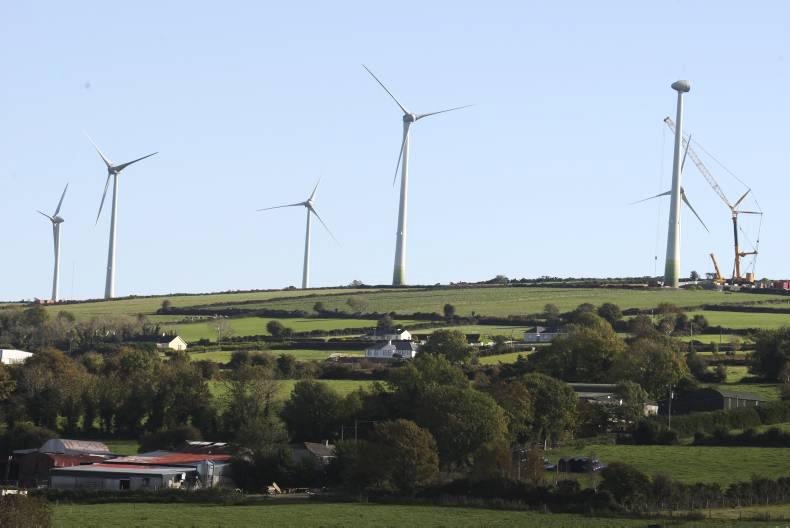The planning application board refused the application, made by Planree Ltd, due to the location of the proposed development in a highly scenic area close to a number of designated and protected areas, including Pettigo Plateau Nature Reserve and Lough Nillan Bog.
Dr Patrick Moran, an ecological consultant hired by An Bord Pleanála (ABP) to the cost of €13,000, carried out a comprehensive assessment of Planree Ltd’s Environmental Impact Statement, and one of his findings was that the development would result in the felling of a large area of forestry (approximately 121.3ha) from an area dominated by a peat-substrate.
This felling would in turn “impact on the water table through transpiration losses associated with the removal of forestry”, concluded Dr Moran.
ABP included this issue in its final refusal, saying that in making its decision the board had regard to “the nature of the site in a generally open landscape characterised by blanket bog, commercial forestry and multiple watercourses”.
It also referred to the “failure” of the applicant company to “comprehensively assess the potential impact of the proposed development on the population of birds” in the area, especially the Whooper Swan and Greenland White-fronted Goose.
Overall, ABP said it was “not satisfied that the development as proposed would not have a significant adverse effect upon the ecological environment and the integrity of certain European sites in view of those sites’ conservation objectives.”
Extent of proposed development
If the proposed development had gone ahead, it would have comprised 49 turbines with a maximum tip height of 156.5m plus two permanent meteorological masts up to a height of 110m. It would have extended across an upland terrain over a distance of some 15km in an east west direction in Co Donegal close to and partly along the border with Co Tyrone.
According to a spokesperson for An Bord Pleanála, it was "a very large project", but the spokesperson added "there have been others of a roughly similar number of turbines".
Some 47% of the site would have encroached on coniferous forestry plantations around the Mourne River catchment, while the eastern end of the site features smaller fields and small farm holdings.
The windfarm would have had the capacity for providing electricity to 55,000 households. There are in excess of 320 wind turbines already built or permitted in the area.
Related stories
Planning permission refused for Meath wind farm development
IFA at odds with wind lobbyists on White Paper
The planning application board refused the application, made by Planree Ltd, due to the location of the proposed development in a highly scenic area close to a number of designated and protected areas, including Pettigo Plateau Nature Reserve and Lough Nillan Bog.
Dr Patrick Moran, an ecological consultant hired by An Bord Pleanála (ABP) to the cost of €13,000, carried out a comprehensive assessment of Planree Ltd’s Environmental Impact Statement, and one of his findings was that the development would result in the felling of a large area of forestry (approximately 121.3ha) from an area dominated by a peat-substrate.
This felling would in turn “impact on the water table through transpiration losses associated with the removal of forestry”, concluded Dr Moran.
ABP included this issue in its final refusal, saying that in making its decision the board had regard to “the nature of the site in a generally open landscape characterised by blanket bog, commercial forestry and multiple watercourses”.
It also referred to the “failure” of the applicant company to “comprehensively assess the potential impact of the proposed development on the population of birds” in the area, especially the Whooper Swan and Greenland White-fronted Goose.
Overall, ABP said it was “not satisfied that the development as proposed would not have a significant adverse effect upon the ecological environment and the integrity of certain European sites in view of those sites’ conservation objectives.”
Extent of proposed development
If the proposed development had gone ahead, it would have comprised 49 turbines with a maximum tip height of 156.5m plus two permanent meteorological masts up to a height of 110m. It would have extended across an upland terrain over a distance of some 15km in an east west direction in Co Donegal close to and partly along the border with Co Tyrone.
According to a spokesperson for An Bord Pleanála, it was "a very large project", but the spokesperson added "there have been others of a roughly similar number of turbines".
Some 47% of the site would have encroached on coniferous forestry plantations around the Mourne River catchment, while the eastern end of the site features smaller fields and small farm holdings.
The windfarm would have had the capacity for providing electricity to 55,000 households. There are in excess of 320 wind turbines already built or permitted in the area.
Related stories
Planning permission refused for Meath wind farm development
IFA at odds with wind lobbyists on White Paper






 This is a subscriber-only article
This is a subscriber-only article






SHARING OPTIONS: